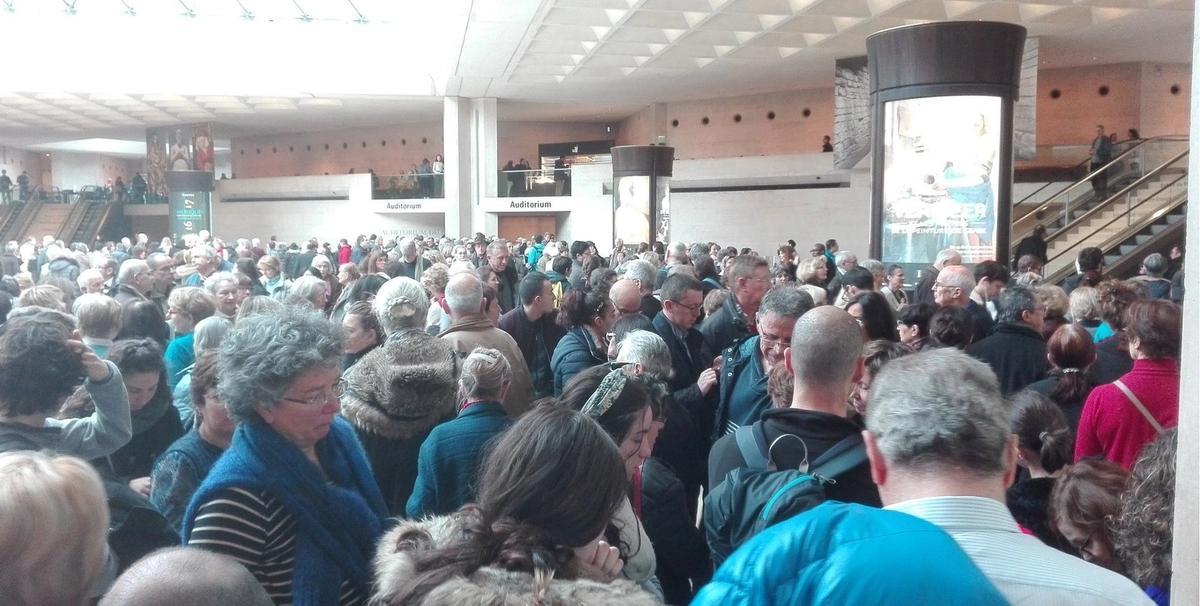Update 11 March: The situation went back to normal at the Louvre this week. The website for reservations was rescheduled and the waiting time was reduced to less than an hour. There was also an increase in the number of staff. Only 2% of the staff took part in the strike on 9 March and it was called off after one day, according to the museum.
The Louvre’s current Vermeer exhibition was supposed to be a major coup. Vermeer and the Masters of Genre Painting (until 22 May) is the first blockbuster show in many years, meant to herald a revival at the museum that saw its attendance drop by more than 15% since the 2015 terrorist attacks in Paris. Twelve of Vermeer’s paintings, a third of his oeuvre, are on loan from America and Europe. But since its opening on 22 February, the exhibition has caused more headaches at the Louvre than celebrations, leading security staff to threaten to strike on 10 March if the situation is not improved.
Surprisingly, the museum did not seem to be ready for the crowds that have flooded to see the show. At least 9,500 people came on the first day, and 40,000 during the first week. Long queues of frustrated visitors were often stuck for hours in front of the exhibition hall, which has a capacity of only 250 to 300 people. The demand has been so high that the museum’s online reservation system quickly crashed and a new site had to be launched.
Visitors must reserve a specific time to enter the exhibition, but can only do so after buying a ticket, which means that many end up returning to queue again several hours later or even the following day, creating problems for anyone from outside Paris. Even after paying for their ticket and waiting for hours, some visitors could not get in at all.
The union representing security staff at the museum, the CGT, announced plans for a rolling strike on 10 March to protest the “breach of professionalism” that has led to “frequent verbal and physical abuse against the staff”. The union adds that the strike is in the “best general interest of the public”.
The Friends of the Louvre, the museum's 60,000-strong membership group who are normally allowed to skip queues, added their angry voices to the fray. The have to follow the same reservation rules, as do International Council of Museums cardholders, journalists, and even members of the staff, who usually use a special entrance.
Once inside, visitors may well ask themselves if it was all worth it. The works by Vermeer are buried among 70 genre scenes from the Dutch Golden Age, organised by detailed category—musical instruments, love letters, visits, parrots. Critics have given the show mixed reviews, with some dismissing it as “mediocre” and “childish”.
A museum spokeswoman says the chaos was partly caused by the massive turnout of the Friends of the Louvre during the first few days. Although special viewing sessions had been programmed for them later this month on evenings and days when the museum is closed, the spokeswoman said, they wanted to join the excitement of being among the first to see the show.
“We should be happy to see that crowds can also show up for an Old Masters exhibition, and not just for contemporary shows,” the spokeswoman pointed out, adding that she was confident things would soon return to normal. The Louvre has promised to reduce wait times to 45 minutes.
The biggest spanner in the works was caused by the decision to introduce a completely new ticketing policy for the museum at the same time. Up until now, a separate ticket was sold for special exhibitions, but now the Louvre has a single ticket, priced from €15 to €17, that covers entry to the permanent collections and all the current shows. The Louvre has three on at the moment: Vermeer, the Leiden Collection and Valentin de Boulogne. This change is part of Jean-Luc Martinez’s laudable goal to encourage visitors back into the permanent galleries. But the timing and execution were poorly planned, turning what should have been a shining moment for the Louvre into a black hole.


